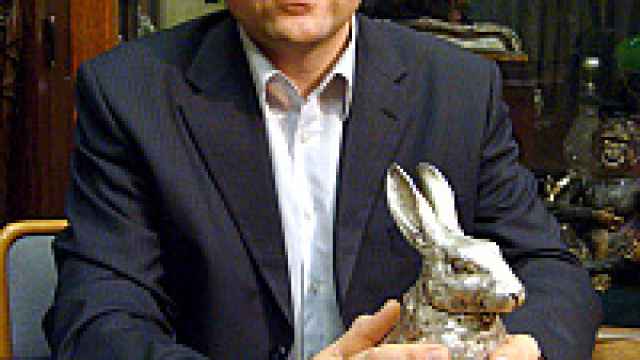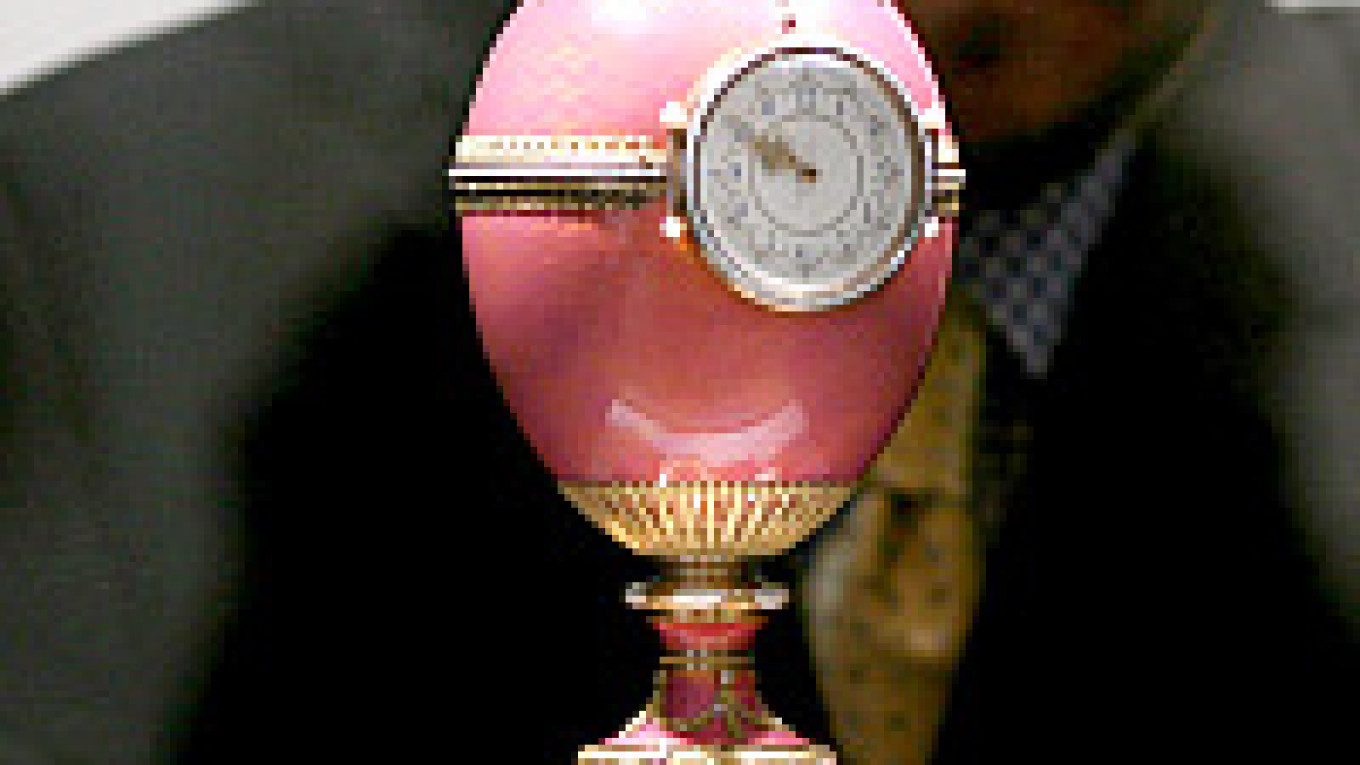The collector had originally planned to show his treasure trove of Russian art in the country's capital and now reveals that it will open instead on May 9 in the German spa town of Baden-Baden. Ivanov, 46, says he's a patriot and only changed his mind because of the high cost of building and Russian bureaucracy. He says his 3,000-piece collection is worth about $1.5 billion.
"The inaugural exhibition in Baden-Baden will feature the best works from the collection," said Ivanov, 46, wearing a suit without a tie. "There will only be masterpieces."
Other plans for a Faberge museum in Russia have stalled, leaving Ivanov able to beat both the State Hermitage Museum and billionaire Viktor Vekselberg.
Faberge was the official supplier to the Russian Imperial court from 1885 to 1917. The company's artworks became popular with Western collectors, led by Malcolm Forbes, in the 1960s. As Russian billionaires appeared on the market earlier this decade, prices reached records.
The soft-spoken Ivanov calculates that his museum building cost about 17 million euros ($22 million) to buy and renovate, including a 1 million euro security system.
He is best known for owning a 1902 Faberge egg made as an engagement gift to Baron Edouard de Rothschild. Ivanov bought it at Christie's International in London in 2007 and believes that it is Faberge's "finest egg ever." It has a clock and a diamond-set cockerel that pops up every hour and flaps its wings. The egg will be in the new museum's first show.
Other items include a rare silver decanter in the form of a rabbit and what Ivanov believes is the last Imperial Egg, made of Karelian birch with gold and diamonds for Easter 1917. Czar Nicholas II was deposed before he could give it to his mother.
When Ivanov first bought the Karelian egg, some experts resisted because its existence wasn't previously known. Ivanov now has a convincing group of documents that his researchers found in the Russian state archives proving that the egg is genuine. It has been shown at a number of major international exhibitions and is now officially accepted by scholars, he said.
Ivanov said he chose Baden-Baden, near Germany's western border, because it is "close to France, a resort for the rich, and historically it has always been the most popular resort for Russians." The local government has also been supportive, he said.
 Bloomberg Ivanov | |
In the 19th century, prominent Russian visitors to Baden-Baden included writer Fyodor Dostoevsky, whose outings to local casinos left him penniless and inspired him to write his novel "The Gambler." Members of the Russian Imperial family were also frequent visitors.
In 2005, the Hermitage announced plans to open a Faberge Museum to display its collection of about 90 items as well as visiting exhibitions. That project has stalled because of insufficient funding.
Vekselberg has plans for museums in St. Petersburg and Moscow that would rotate private collections including his Faberge holdings that include nine Imperial Eggs. Those plans were announced in 2006 and have also been delayed.
Ivanov's Moscow office, a short walk from the Kremlin, is full of Orthodox icons, Faberge works and a Rubens painting, "The Holy Family," bought at Christie's International. Photos of President Dmitry Medvedev and Orthodox Patriarch Kirill hang on the wall.
Ivanov, who was born in Pskov, close to the Estonian border, said he began collecting Faberge works in the late 1980s after graduating in law from Moscow State University and "making a fortune" from importing computers.
His private collection is called the Russian National Museum, though it doesn't have its own space. Selected items have been shown at exhibitions in Moscow and abroad. Some of the collection can be seen at http://www.rnm.ru.
The 19th-century, four-story museum has bulletproof cases, video cameras that react to odd behavior, sensors that monitor sound and an alarm system that shuts down the entire building like a fortress, Ivanov said.
Each year, about 8 million people visit Baden-Baden, which has a population of 55,000, according to the mayor. Approximately 815,000 of the annual visitors stay the night, of which 35,000 are Russians. Ivanov said Russian businessmen own a number of hotels in the town.
Entrance to the Faberge Museum will cost 20 euros. Ivanov's most pessimistic forecast is 200,000 visitors a year, and he's planning for up to 500,000.
"Even at 100,000 visitors a year, we would cover costs," said Ivanov, "The collection needs to make money and to pay its way."
The House of Faberge was founded in St. Petersburg in 1842 by Gustav Faberge. Under his son, Peter Carl Faberge, the company established its court links. It also catered to the growing demand for luxury items from the country's newly rich as the economy boomed in the two decades before World War I.
A Message from The Moscow Times:
Dear readers,
We are facing unprecedented challenges. Russia's Prosecutor General's Office has designated The Moscow Times as an "undesirable" organization, criminalizing our work and putting our staff at risk of prosecution. This follows our earlier unjust labeling as a "foreign agent."
These actions are direct attempts to silence independent journalism in Russia. The authorities claim our work "discredits the decisions of the Russian leadership." We see things differently: we strive to provide accurate, unbiased reporting on Russia.
We, the journalists of The Moscow Times, refuse to be silenced. But to continue our work, we need your help.
Your support, no matter how small, makes a world of difference. If you can, please support us monthly starting from just $2. It's quick to set up, and every contribution makes a significant impact.
By supporting The Moscow Times, you're defending open, independent journalism in the face of repression. Thank you for standing with us.
Remind me later.


